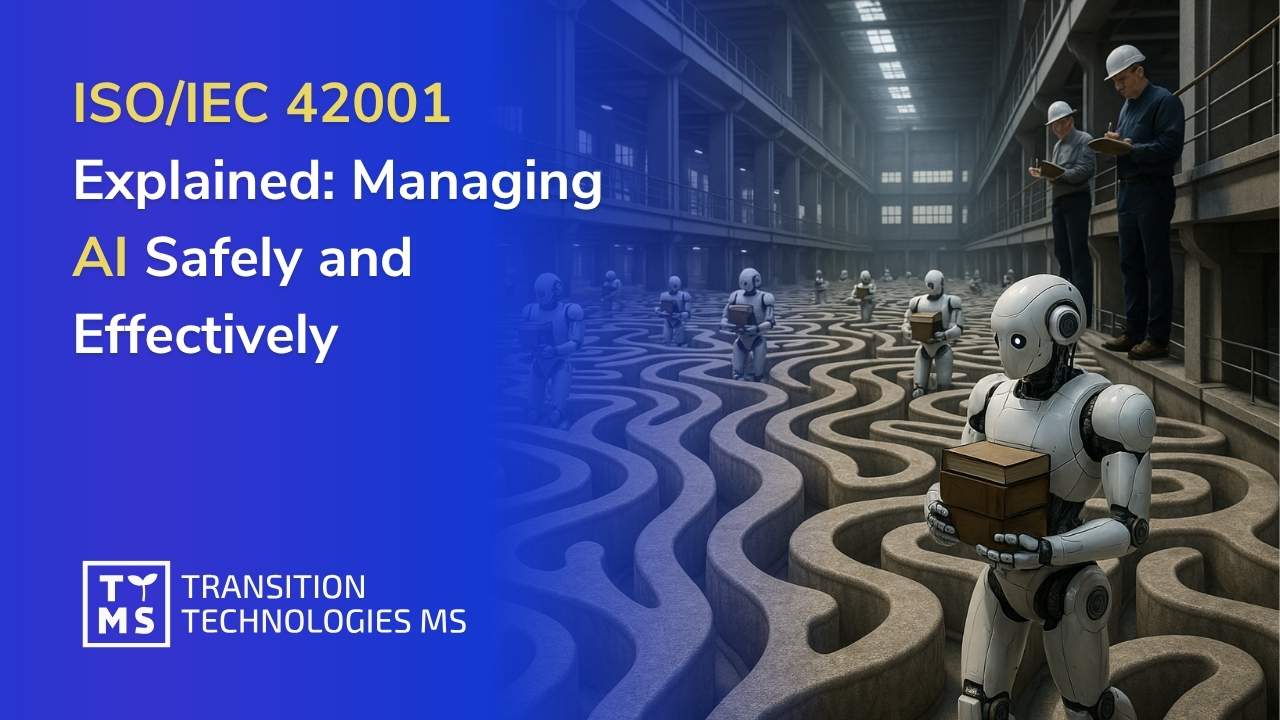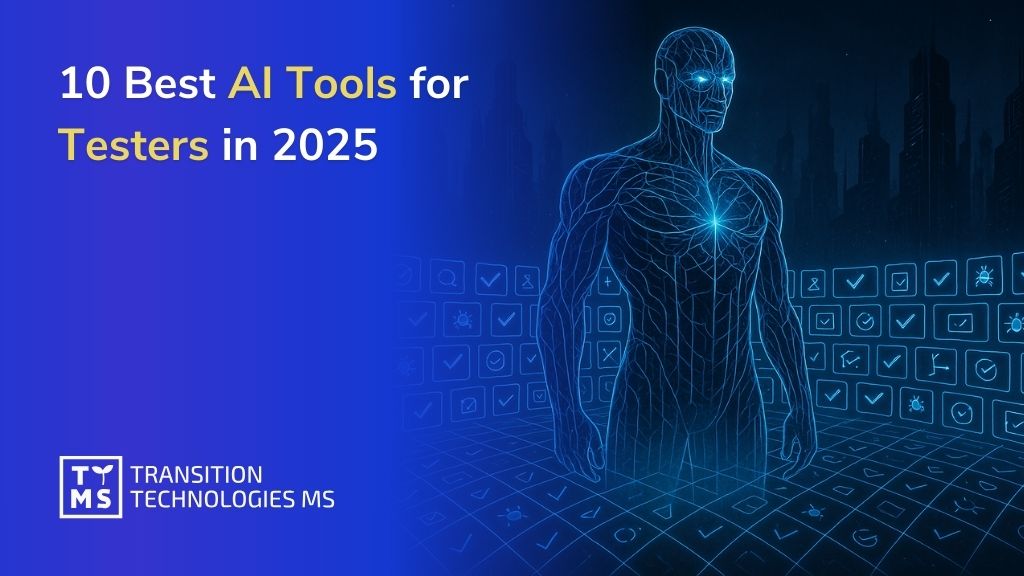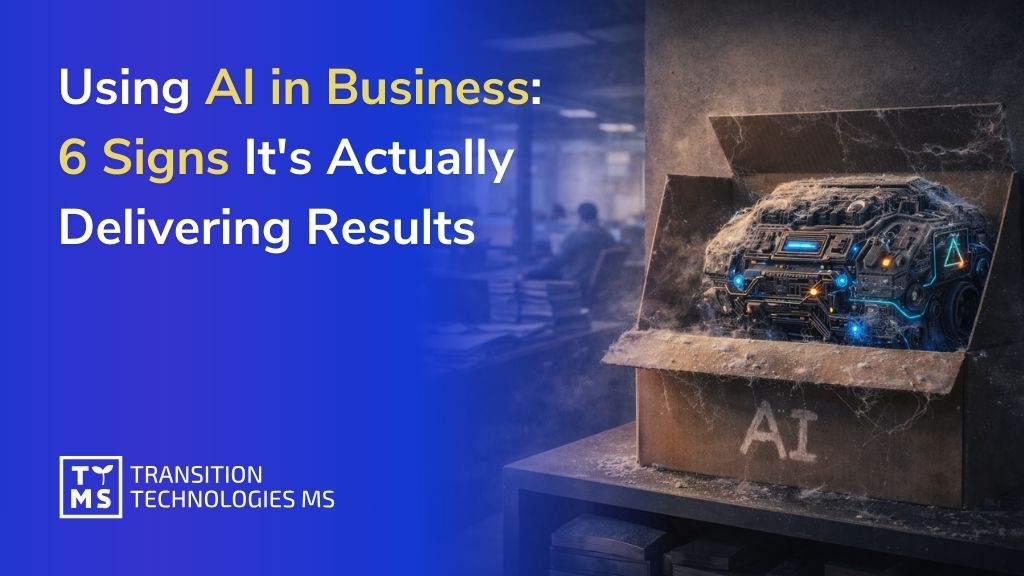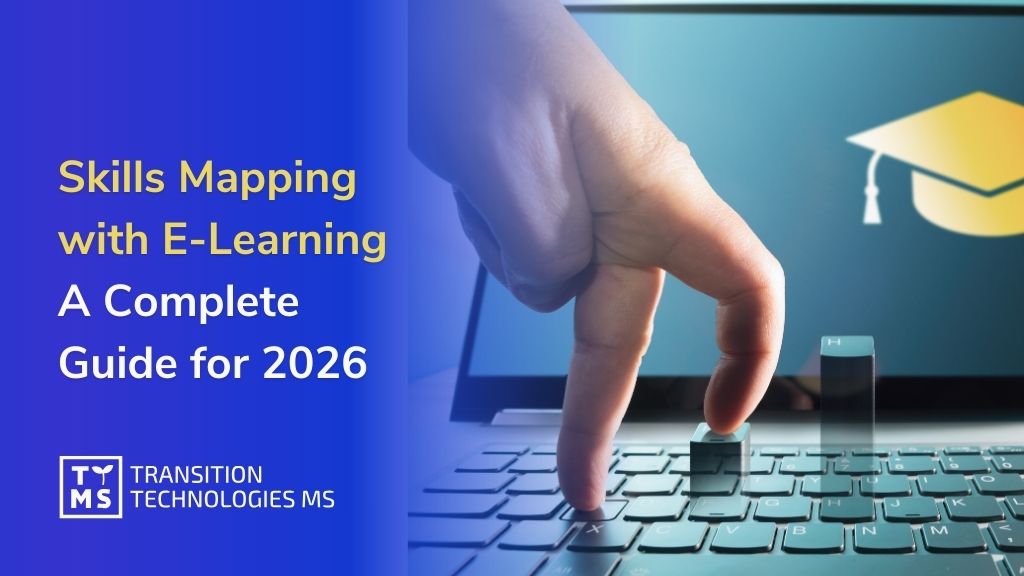
Imagine an organization where every employee knows exactly how to grow their skills, and training is no longer seen as a cost but as an investment that drives the entire business forward. Today, this vision is possible thanks to AI-powered tools. These solutions make it easier than ever to connect corporate strategy with everyday learning and development needs.
In this article, you’ll discover how AI can help diagnose skill gaps, design tailored development programs, and act as a strategic advisor to the board by clearly demonstrating how training impacts business results – from cost reduction to increased innovation.
1. AI as a Breakthrough in Measuring Training Effectiveness
1.1 Why Course Completion Rates Are No Longer Enough
Just a few years ago, the success of training programs was measured by simple metrics: how many employees completed a course and how they rated it in a survey. At first glance, those tables full of “checked-off” results gave leaders a sense of control. But today, that picture is far too flat. Boards are no longer satisfied with completion clicks. They want proof that training drives real change – higher revenues, lower costs, faster onboarding, or greater readiness to embrace innovation.
The e-learning function cannot operate in isolation from the company’s strategy – its effectiveness depends on close collaboration with the board. This is what shifts training from being a “nice-to-have” to a strategic growth tool. When priorities are set together, development programs focus on the skills that truly matter – entering new markets, supporting digital transformation, or boosting innovation. This collaboration also enables faster responses to business needs and provides stronger budget justification by showing ROI in hard numbers. Even more, integrating learning data with analytics tools makes it possible to report measurable outcomes – from reducing operational errors to increasing sales – positioning training as a genuine investment in the company’s future.
1.2 How AI and Power BI Enable Real-Time Reporting
Artificial intelligence opens a new chapter. AI tools now automate course creation and, when connected with e-learning platforms, enable reporting almost in real time.
This is exactly how AI4E-learning works – a dedicated solution that automates and streamlines the entire course creation process, from analyzing source materials to generating ready-to-use e-learning modules.
With AI4E-learning, training that once took weeks can now be created in hours or days. What’s more, it immediately delivers performance data – such as completion rates, time spent on tasks, and areas needing further improvement.
When integrated with platforms like Power BI, AI4E-learning allows CLOs to present data through clear dashboards and link training activity with any business KPI. By synchronizing information from LMS, CRM, and HR systems, organizations gain a full picture of how development programs impact company performance. And because AI4E-learning accelerates course design, it also helps organizations quickly adapt to shifting business priorities.
2. The Strategic Role of the CLO in AI-Enhanced Learning
2.1 The CLO as a Transformation Leader
The Chief Learning Officer is no longer simply responsible for delivering training. Today, the CLO is a transformation leader who leverages AI to monitor, predict, and optimize the impact of development initiatives.
The example of L’Oréal illustrates how this role is evolving. Nicolas Pauthier implements a learning strategy built on cohort-based learning and precise skills mapping. As CLO, he doesn’t just organize training – he advises the board strategically. His focus is on creating experiences that emotionally engage employees, motivating them to learn, while also reporting the business value of training programs – from increased sales to cost reductions. This shows that an effective CLO bridges the gap between people development and strategic business goals – and AI-driven analytics are invaluable in achieving this.
2.2 Linking Training to Business Priorities
When training is directly tied to company priorities, employee development stops being a cost and becomes an investment that truly drives business growth. That’s when learning starts working toward strategic goals – and the results are visible in practice.
Imagine a company entering a new market. Without preparation, this could mean months of chaos and costly mistakes. But with prior training on local regulations, customer service, or language skills, employees are ready from day one, making expansion faster and safer. The same applies to cost reduction: when production teams complete safety training on new procedures, workplace accidents and downtime decrease, delivering immediate savings.
In digital transformation, training also bridges the gap between investing in new technologies and actually using them. A company that equips employees with AI and automation skills will see a faster return on investment than one that expects staff to “figure it out themselves.” Similarly, strategically developed skills – such as customer service excellence or agile methodologies – are hard to replicate and become a unique competitive asset.
And finally, there’s the human factor. Employees who see that training is not “for show” but genuinely helps them in their daily work and supports organizational goals feel a stronger sense of purpose. This boosts motivation, increases engagement, and ultimately reduces turnover and recruitment costs.

3. Key Business Metrics Measured Through E-Learning
E-learning opens entirely new possibilities for measuring effectiveness, allowing organizations to track indicators that were practically impossible to capture in traditional training.
Learning Management Systems (LMS) record every step of the learning journey – from logins and activity on the platform to test results. When combined with analytics tools and artificial intelligence, this data goes far beyond completion rates. It becomes a valuable source of insight into skill development and its impact on overall business performance.
So, what do learning leaders in large organizations measure today?
3.1 Revenue Growth Prediction – Linking Training to Sales
This metric predicts how specific training programs can directly influence company revenue growth.
AI-powered tools analyze data from LMS platforms and sales systems to identify correlations between employee training participation and business results. For example: after a product training, the sales team may achieve a higher conversion rate or increase average deal size. AI not only identifies these relationships retroactively but can also forecast how much revenue will grow if a given group of employees completes the course.
This measurement helps set training priorities – highlighting which programs have the greatest impact on sales and business growth. It also enables companies to predict which skills will be most critical for financial performance in the near future.
3.2 Cost Reduction Analysis – Fewer Errors and Downtime
Another measurable benefit of AI-driven e-learning is cost savings. This analysis shows to what extent training helps reduce both operational and strategic costs.
In practice, this could mean fewer production errors after quality training, fewer customer complaints following service courses, or reduced downtime thanks to better-prepared technical teams. AI compares LMS data with inputs from operational, financial, and HR systems to clearly demonstrate where training has lowered costs.
This approach allows CLOs to speak the board’s language: instead of reporting how many employees completed a course, they can show that customer complaints dropped by 15% – translating into hundreds of thousands of dollars saved annually. Training thus becomes a tangible element of cost optimization and organizational efficiency.
3.3 Time-to-Competency – Faster Path to Full Productivity
Time-to-Competency measures how long it takes an employee to reach full productivity after training. Traditionally, this was difficult to capture – organizations often didn’t know exactly when a new hire became fully effective.
With e-learning, especially AI-enhanced tools, this process is measurable. LMS platforms track how quickly employees absorb knowledge, complete assignments, and pass assessments. AI then compares these results with job performance data – such as projects delivered, customers handled, or sales closed. CLOs can therefore precisely determine how long it takes to move from training to peak performance.
Shortening Time-to-Competency brings measurable benefits: faster onboarding, less disruption in operations, and reduced costs of adaptation.
3.4 Sentiment Analysis – The Learner’s Voice as a Data Source
With natural language processing (NLP), organizations can analyze comments, surveys, ratings, and even communication patterns to understand learners’ satisfaction and engagement levels.
Traditional training relied on simple surveys like “Rate the course from 1 to 5.” Sentiment analysis goes much further – capturing nuances and distinguishing between polite ratings and genuine enthusiasm (or frustration). AI can, for example, reveal that employees respond positively to interactive modules and practical exercises but react negatively to long, monotonous video content.
This measurement is extremely valuable, not only for improving training programs but also for linking learner satisfaction to broader metrics – such as talent retention and organizational culture. In effect, sentiment analysis provides a window into how training influences workplace climate, employee motivation, and the team’s readiness for future growth.
3.5 Innovation Readiness Score – Preparing for Innovation
This metric answers a crucial question: are our employees ready to adopt and co-create innovation, or do they still need additional support?
AI evaluates not only e-learning course data but also the pace of acquiring new skills, engagement in project tasks, and openness to new technologies. This helps determine the extent to which a team is prepared for the implementation of AI tools, new sales processes, or digital production solutions.
The metric is highly practical because it reflects not only current skill levels but also the organization’s innovation potential. A high score signals that the company can confidently invest in new technologies or business models, while a low score highlights the need to strengthen training programs and foster a culture that embraces change.

4. From AI Data to Strategic Insights for the Board
4.1 Reports that Speak the Language of Business
Data gathered from AI tools only gains real value when translated into insights that executives can act upon. Raw statistics – such as logins, course completions, or average learning time – don’t reveal whether training investments truly support business growth. Only well-prepared reports allow CLOs to highlight clear connections: faster onboarding of new hires, reduced operational costs, or increased sales following product training. In this way, training becomes part of strategic discussions, not just an operational activity of the L&D department, and executives receive concrete proof that people development drives both financial results and competitiveness.
In practice, one of the most effective ways to report training outcomes to the board is through interactive dashboards. With tools like Power BI, organizations can build visualizations that clearly show how learning initiatives impact business performance. For example, a dashboard might display course completion rates alongside sales results, making it easy to see how product training improves sales team effectiveness. Another visualization could compare the number of errors or operational downtimes before and after training, providing evidence of cost savings.
Equally valuable for executives is tracking Time-to-Competency – the average time it takes new employees to reach full productivity. For companies focused on innovation, a dedicated panel displaying the Innovation Readiness Score adds another dimension, showing the organization’s readiness to adopt new technologies and business models. Dashboards like these help structure complex data and enable more informed business decisions based on facts, figures, and forecasts.
4.2 Predictive Analytics as a Driver of Smarter Planning
Predictive analytics is more than just a buzzword – it’s a powerful tool that is changing the way business decisions are made. Its strength lies in the ability to forecast the future based on data, rather than only analyzing the past. In the context of e-learning, this means CLOs and L&D teams don’t have to wait until skill gaps emerge – they can proactively design development programs in the areas where demand will grow in one, two, or three years.
For example, if a company is introducing process automation in customer service, predictive analytics will show that the demand will shift away from routine operational skills – soon to be handled by AI – and toward soft skills such as problem-solving, abstract thinking, relationship building, and empathy. These are precisely the qualities that artificial intelligence has yet to master, and they are becoming increasingly valuable in modern organizations.
As AI automates repetitive tasks, the focus of human work moves to more complex and creative areas. For employees, this means developing new capabilities – analyzing data instead of manually entering it, designing solutions rather than just following instructions, or engaging in conversations with clients in challenging, emotional situations where empathy and emotional intelligence are crucial. For CLOs, this represents both a challenge and an opportunity: well-designed training programs can prepare the organization for a future where competitive advantage is defined not by the quantity of work done, but by its quality and adaptability.
In other words, predictive analytics powered by AI helps not only forecast which skills will be needed in the future but also build development programs around the capabilities that AI will not replace anytime soon – abstract thinking, creativity, empathy, and decision-making under uncertainty.
In the e-learning context, predictive analytics provides CLOs and L&D teams with the ability to:
- Forecast skill demand – anticipate which competencies will be critical in 2–3 years due to expansion plans or the introduction of new technologies.
- Identify skill gaps before they become problems – AI can highlight which departments will need additional training to meet future challenges.
- Predict the business impact of training – estimate outcomes such as increased sales after launching a targeted development program.
- Optimize training investments – identify which programs deliver the highest ROI and which have only a marginal impact.

5. AI-Based Measurement Challenges – and How to Overcome Them
5.1 System integration
One of the biggest challenges in implementing AI-driven solutions is the lack of integration between systems. The key to overcoming this lies in having a technology partner who not only understands integration but also the business context and the specifics of different organizational areas. This is exactly how TTMS operates – combining expertise in AI implementation with practical knowledge in HR, sales, and e-learning. Our developers work hand in hand with domain experts, ensuring that solutions address real business needs.
This approach is particularly valuable for companies without specialized in-house teams. By partnering with TTMS, they gain immediate access to proven practices from large organizations, regardless of their own resource scale.
5.2 Data security and compliance
Adhering to data security standards and ensuring ethical data use are fundamental in today’s unstable geopolitical climate. Cyberattacks are increasing every year, and data leaks are no longer a movie plotline but a real and serious threat to businesses.
That’s why it is essential to implement modern cybersecurity measures and ensure full compliance with regulations such as the AI Act and ISO standards. Collaborating with a partner who can embed cybersecurity into every stage of software implementation is the safest path forward.
5.3 New analytical competencies for L&D teams
To fully unlock the potential of AI, L&D teams need to strengthen their ability to interpret data and apply it in a business context. Modern e-learning programs collect and integrate large volumes of information from LMS platforms, which requires developing new analytical skills, including:
- Data literacy – the ability to read, interpret, and draw conclusions from reports and dashboards.
- Learning analytics – identifying participation trends, measuring engagement, and evaluating training effectiveness.
- Data storytelling – translating raw numbers into clear narratives for managers and executives (e.g., ROI of training, impact on business KPIs).
- Predictive analytics – using AI models and statistics to forecast training needs, knowledge gaps, and future competency demands.
- Data governance and compliance – understanding legal frameworks (e.g., GDPR, AI Act) and applying ethical, secure data management practices.
- Connecting HR and business data – integrating learning metrics with workforce turnover, performance, and team outcomes.
- Experimentation and A/B testing – designing and analyzing training format experiments to optimize L&D programs.
Fortunately, many of these areas can already be supported by AI-powered tools. AI can:
- Automate data analysis – process large data sets quickly and uncover hidden patterns.
- Generate predictions – anticipate which employees may struggle to complete courses or which competencies will be in shortage in the future.
- Deliver actionable insights – e.g., “sales teams learn faster with video content than with e-books.”
- Personalize learning experiences – adapt training to individual learner profiles and preferences.
- Support data storytelling – automatically create summaries that make training results more accessible to decision-makers.
6. Strategic Recommendations for CLOs and Executive Boards
6.1 Designing AI-Ready KPIs
Designing KPIs with AI-powered tools in mind should begin as early as the program development stage. Clearly defining business goals and performance indicators allows organizations to measure training effectiveness with precision later on. Modern e-learning platforms provide data that significantly enrich analysis – from tracking participant engagement in detail (e.g., where learners pause during video modules or which quizzes they find most challenging) to assessing learning speed and preferred learning styles (visual vs. text-based), as well as measuring knowledge transfer into practice by integrating training outcomes with corporate systems.
As a result, KPIs can be designed to capture real training effectiveness, not just user activity. Examples include developmental indicators such as tracking skill progression over time or predictive KPIs that use AI algorithms to forecast whether an employee will reach the required knowledge level within a defined timeframe.
When building KPIs, it is important to avoid focusing solely on quantitative data – for instance, the number of LMS logins does not reflect training effectiveness. A dynamic approach is essential: KPIs should be reviewed and adjusted during training programs. Equally important is combining data from multiple systems – LMS, CRM, and HRIS – to provide a holistic view of training impact on the organization.
In practice, AI-powered e-learning KPIs can be divided into several categories:
- Cost-efficiency KPIs – measuring training ROI, e.g., cost per employee vs. performance improvement or reduced onboarding time.
- Adaptive KPIs – focusing on organizational readiness for market changes, such as reskilling and upskilling speed or time to adopt new tools and processes.
- Business KPIs – directly tied to company results, such as increased sales after training or improved customer service quality.
- Strategic KPIs – measuring competitive positioning, e.g., response time to industry shifts or the percentage of critical competencies covered by AI-driven learning paths.
6.2 Quarterly Reporting Cycles
Quarterly reporting provides the optimal balance between strategic and practical perspectives for executive boards. A three-month cycle is long enough to capture the real effects of both training and business initiatives, yet short enough to allow for timely adjustments when results diverge from the intended strategy.
Quarterly reports avoid the information overload often caused by monthly reporting, focusing instead on what matters most to executives: trends, patterns, and the impact of initiatives on business goals. This reporting rhythm also aligns naturally with corporate budgeting and financial cycles, making it easier to compare learning KPIs with operational and financial outcomes.
In the training context, quarterly summaries offer an additional advantage – they allow enough time to gather reliable data, observe how knowledge is applied in practice, and analyze results through AI-powered tools. Regular quarterly reporting also strengthens organizational accountability and transparency by creating a consistent rhythm in which every initiative is not only launched but also evaluated and continuously improved based on actionable insights.
7. Conclusion – AI as a Lever for Strategic Growth
Artificial intelligence not only streamlines the course creation process but also empowers Chief Learning Officers (CLOs) to report training effectiveness in a way that is accurate, predictive, and aligned with executive expectations.
Transition Technologies MS (TTMS) supports learning leaders in measuring the impact of development initiatives by delivering solutions that combine data analytics, AI tools, and seamless integration with enterprise systems. With deep expertise in designing and implementing digital platforms, TTMS enables organizations not just to capture learner activity but to translate it into concrete business metrics.
By integrating e-learning platforms with CRM, HRIS, and ERP systems, TTMS helps link training outcomes directly to measurable results such as revenue growth, improved customer service quality, or faster onboarding of new employees. The company also provides support in creating dedicated dashboards and quarterly reports that clearly present the effectiveness of L&D initiatives and the ROI of workforce development to executive boards.
As a result, e-learning teams gain tools that not only simplify performance monitoring but also demonstrate the strategic value of training for the entire organization.
And if managing e-learning courses and organizational knowledge feels like a challenge, make sure to visit our page – LMS Administration Services | TTMS.
Explore our dedicated tool for rapid online course creation – AI4E-learning.
Check out our full range of AI solutions for business.






